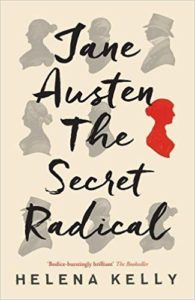To start off you need to know this is a work of fiction. It’s unclear why this was created rather than researching and telling the real story about the formation of the Jane Austen Society. Especially as now this will be taken as fact rather than the history. It’s evident from the notes in the back that the author did some research about places and names, the latter to avoid naming actual individuals.
The author wanted to “write about a group of people traumatised … who came together over their shared love of … Jane Austen.” She did this very well, all the characters are leading miserable lives in what appears to be a pretty miserable time (post WWII), making this a difficult read. There is an attempt to make Chawton feel like “something out of a Jane Austen novel.”
The position and treatment of women was particularly bleak. “Austen saw what lack of money meant for the women in her life, and this consuming fear was … telegraphed most loudly in all her books.” I was glad the characters discussed Jane Austen with each other or it would have been too much to bear.
One of the characters observes; “we love Jane Austen because her characters … are no better or worse than us. They’re so eminently, so completely, human.” But the characters in this book didn’t seem very real. Perspective jumped from one to another between paragraphs though each had their own section.
Despite a couple of twists and turns Chawton cottage is secured for the society and all the characters get their happy endings, they are rushed into them in the last two chapters.
I finished this book more because I felt I should rather than from any enjoyment of the text.

